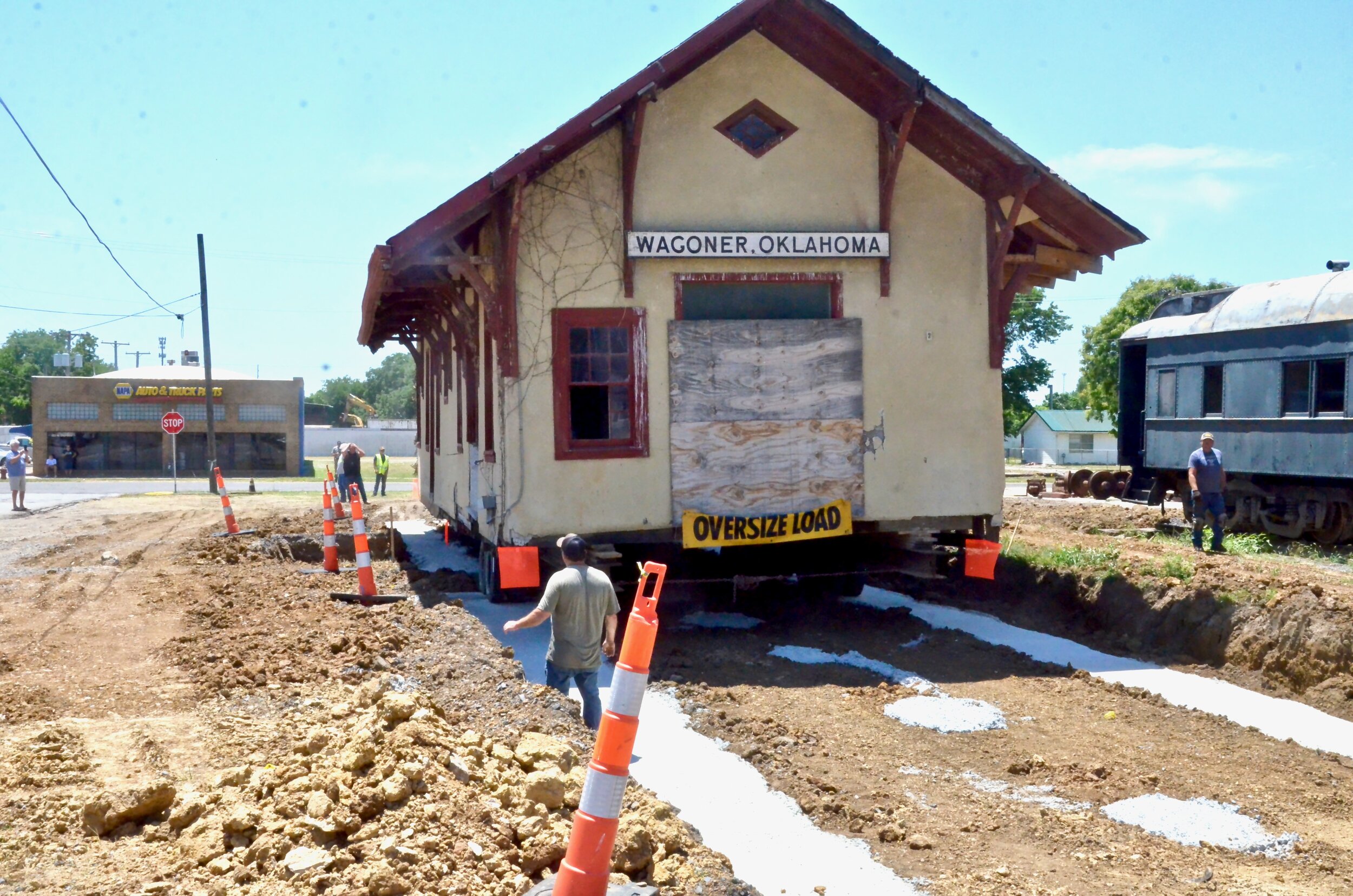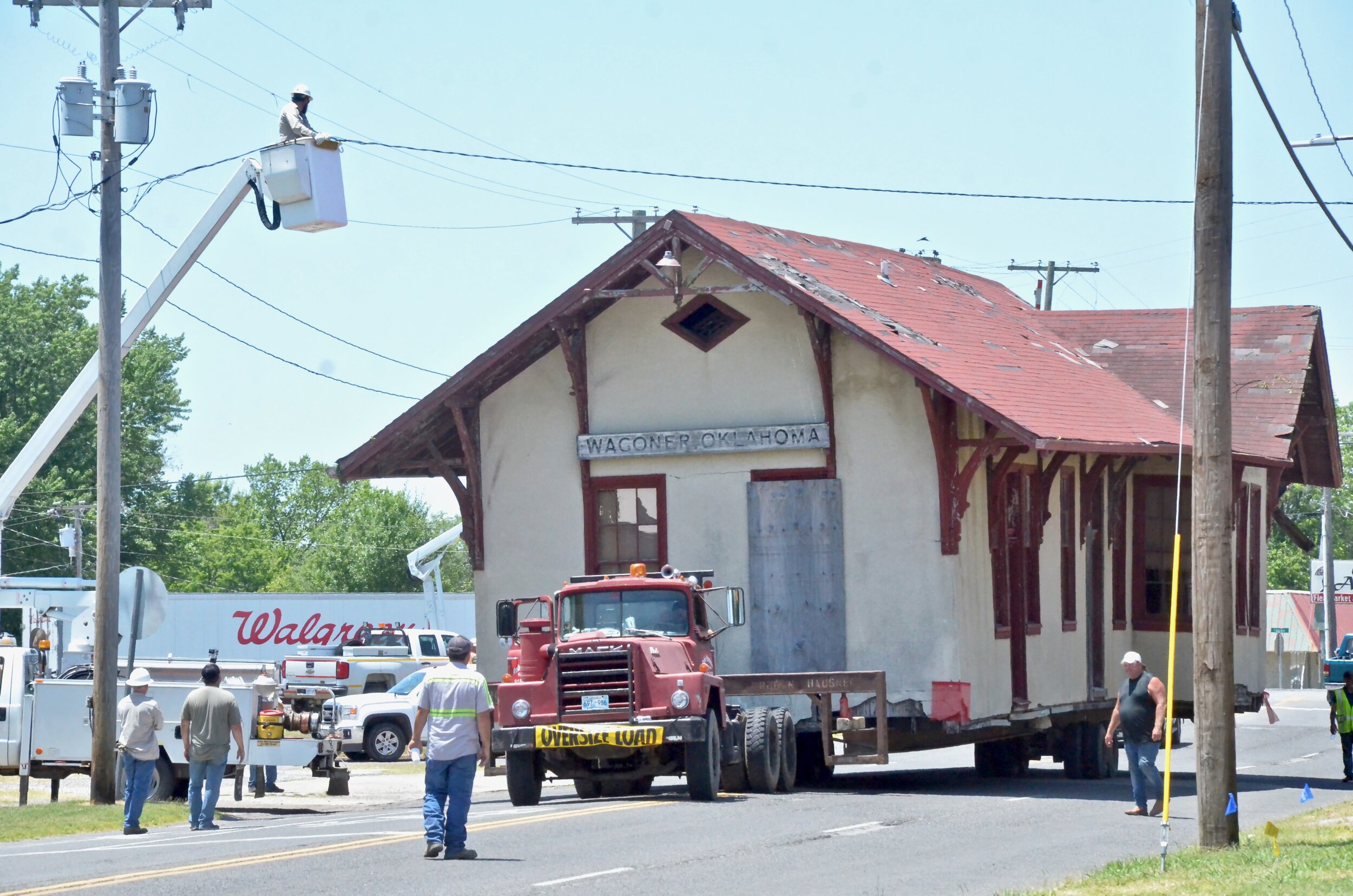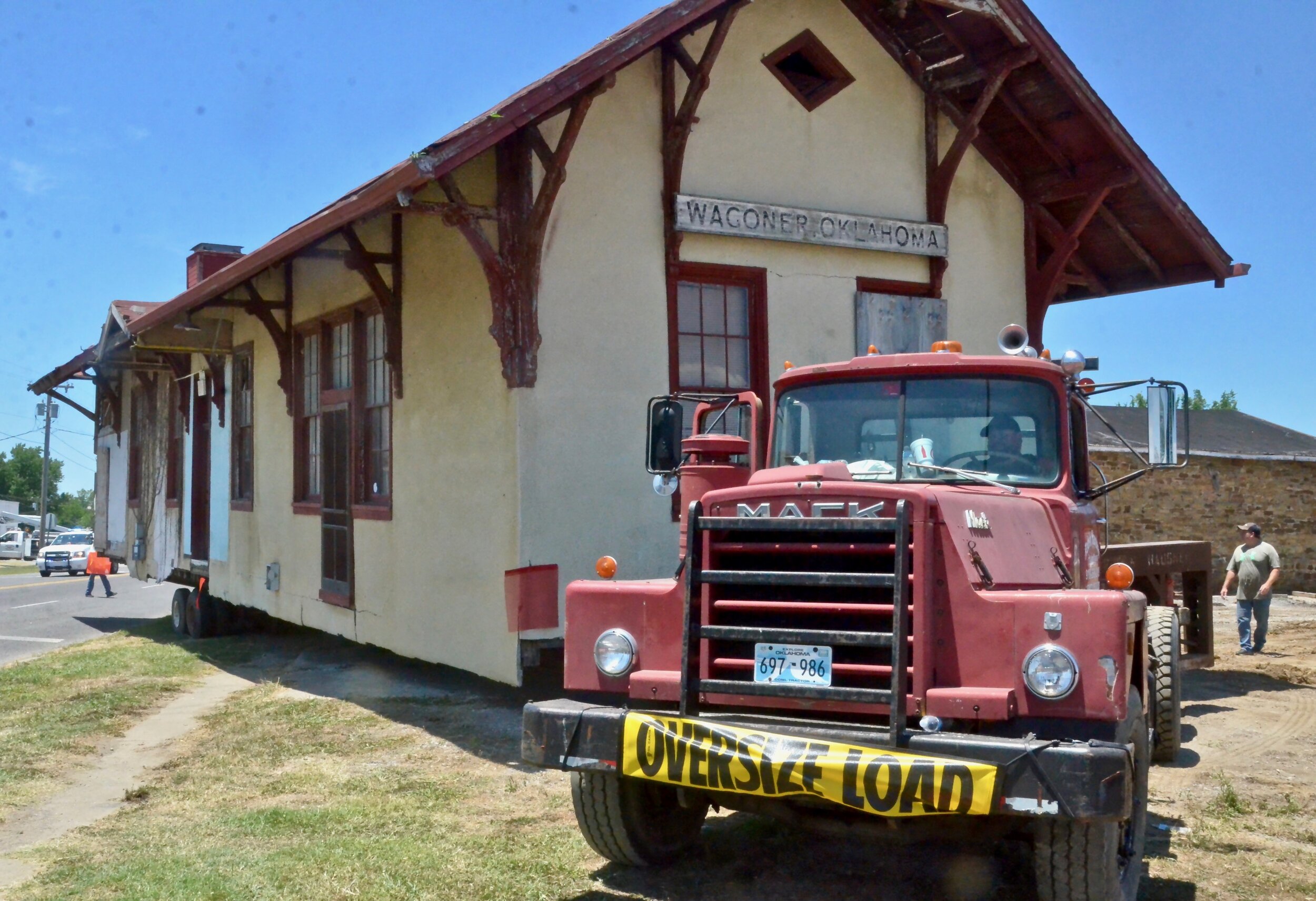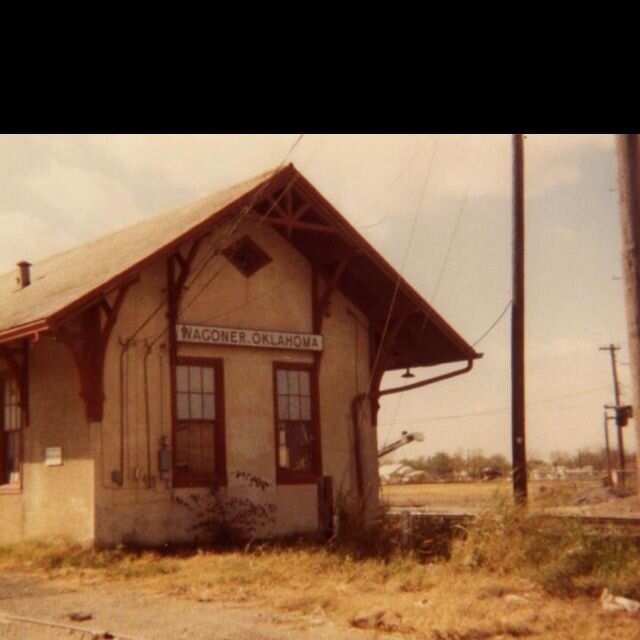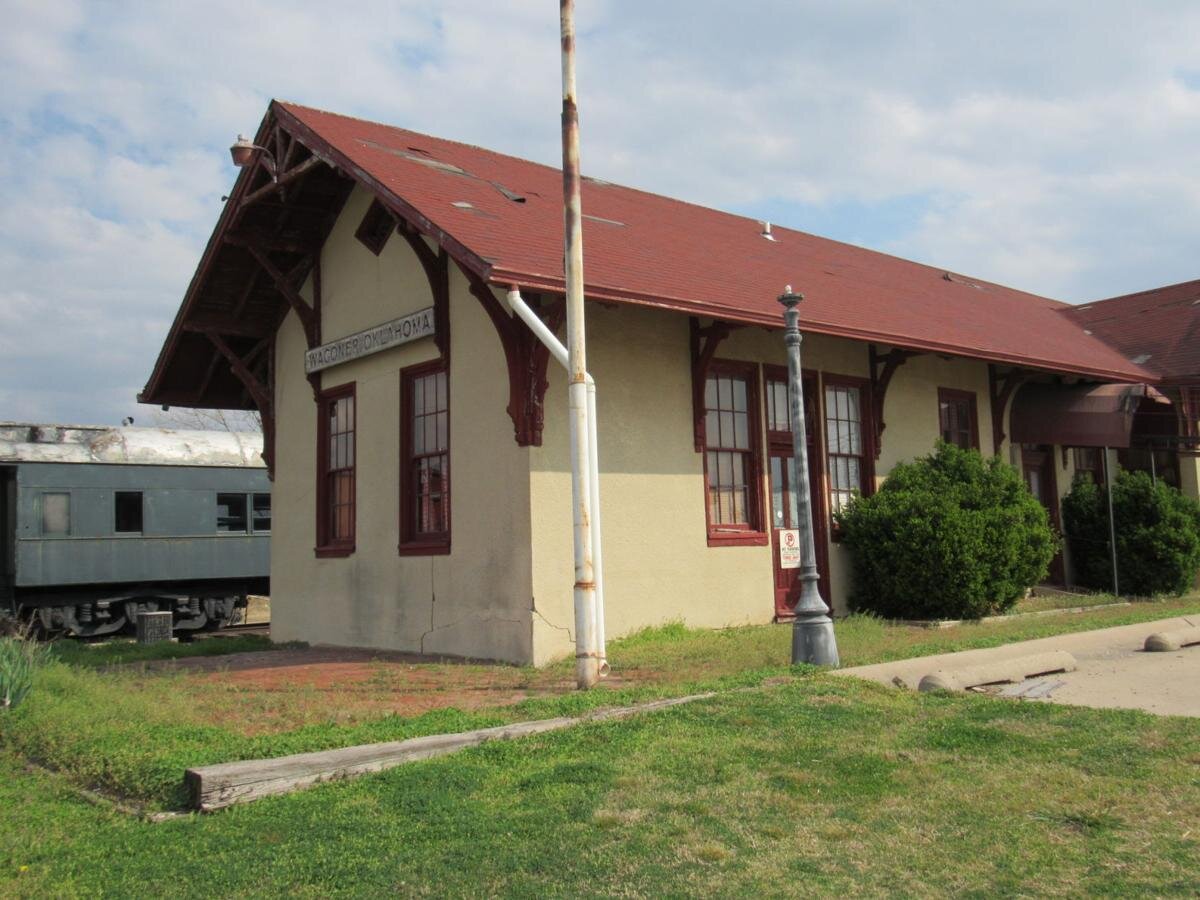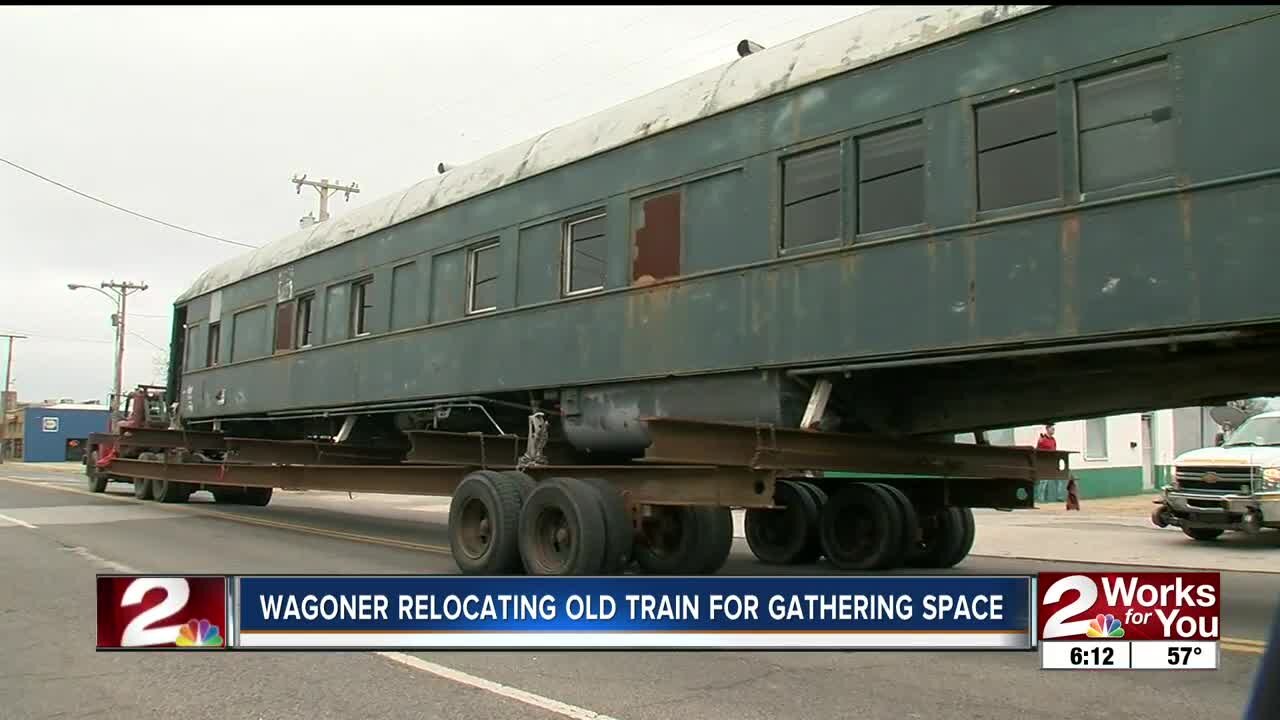From Historical Prominence the Wagoner Depot has Returned Home
It had long been the dream of city leaders and residents of Wagoner to return a piece of prominent history back to the downtown area for all to enjoy. Recently, this dream became a reality when officials were able to move the MKT (Katy) depot, built in 1896, along with a caboose and passenger car back to the original area where it served the community and travelers for decades.
Now, in extreme disrepair, the 5,000 square foot depot will be refurbished and used as a community gathering space and public park.
Mayor Albert Jones said that moving the depot back to the downtown area was important because the city of Wagoner was founded as a result of the depot being constructed. “On January 4, 1896, by an Act of Congress, the city of Wagoner became the first incorporated city in Indian Territory. This was made possible by the completion of the depot,” Jones said.
In 1988 the depot was purchased by private investors who moved it north of downtown along Highway 69. It was remodeled and used as a restaurant but had recently fallen into disrepair and was vacant. Through several fund-raising efforts, the city was able to move the building and the two rail cars back to the downtown area.
Jones said that the city was able to secure a grant from the OU College of Architecture’s Institute of Quality Communities (IQC), with assistance from the Oklahoma Municipal League, to help with the redesign concept of the depot and adjoining park. Jones added that the plan calls for parking on the west side, green space and picnic areas on the east side of the depot. “We are so excited to be able to bring the depot back to its original area, which will create a wonderful gathering place for our residents,” he said.
The History
Evidence of life in the area of what would later become Wagoner has been traced back to around 600 A.D., when relics were found in an Indian mound.
During the civil war, just north of the future community, Union and Confederate troops were stationed in the area and fought in a skirmish on September 15, 1864. After the war, the area became a primary cattle trail as herds were driven north from Texas on their way to markets in Kansas and Missouri. Because of the heavy cattle traffic, in 1871, the Missouri - Kansas and Texas (Katy) Railroad built tracks from Kansas to south of Wagoner shortening the distance of the cattle drive. That area would become known as Gibson Station, which holds the distinction of having Oklahoma’s first railroad depot.
Around 1883, Henry Samuel “Bigfoot” Wagoner, who worked with the Katy Railroad decided a switch was needed to load the high number of cattle and large amounts of lumber from the area. When the switch was completed, a Katy road master telegraphed a company official that the “Wagoner switch was completed.” Thus, the name stuck, and the site became known as Wagoner Switch and later, simply Wagoner.
In 1888, as the population began to grow, the town’s request for a post office was granted. By 1894, the town had a population of 642 and had five mercantiles, a cotton gin, grist mill, livery and four hotels. By 1895, the town had grown to approximately 1,500 residents. Around this time, the community formed a commission that circulated a petition requesting incorporation under the statutes of Arkansas. The incorporation request was granted by the U.S. District Court on January 4, 1896, making Wagoner the first city incorporated in Indian Territory.
In 1907, an election was held to determine the county seat of Wagoner County. The city of Wagoner won the election over neighboring towns of Coweta and Porter. By statehood, Wagoner had a population of nearly 5,000 residents. In April 1908, the town known as “The Queen of the Prairie”, incorporated in the state as the City of Wagoner.
Wagoner played a very significant role in the development of the railroad industry throughout Indian Territory as well as early statehood. From around 1873 to 1910, Wagoner, along with the railroad served thousands of passengers and was essential in the settlement and development of northeastern Oklahoma. Now, over one hundred years after it was built, the Wagoner train depot is back home, once again to be appreciated and enjoyed as it once was for so many who travelled the rails to reach their destinations.
###


